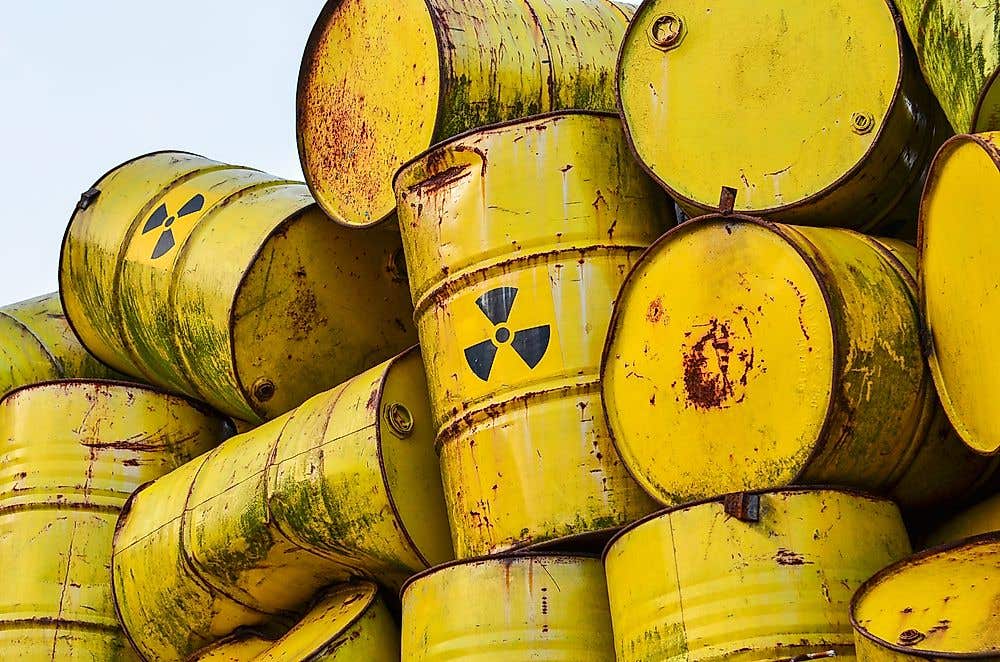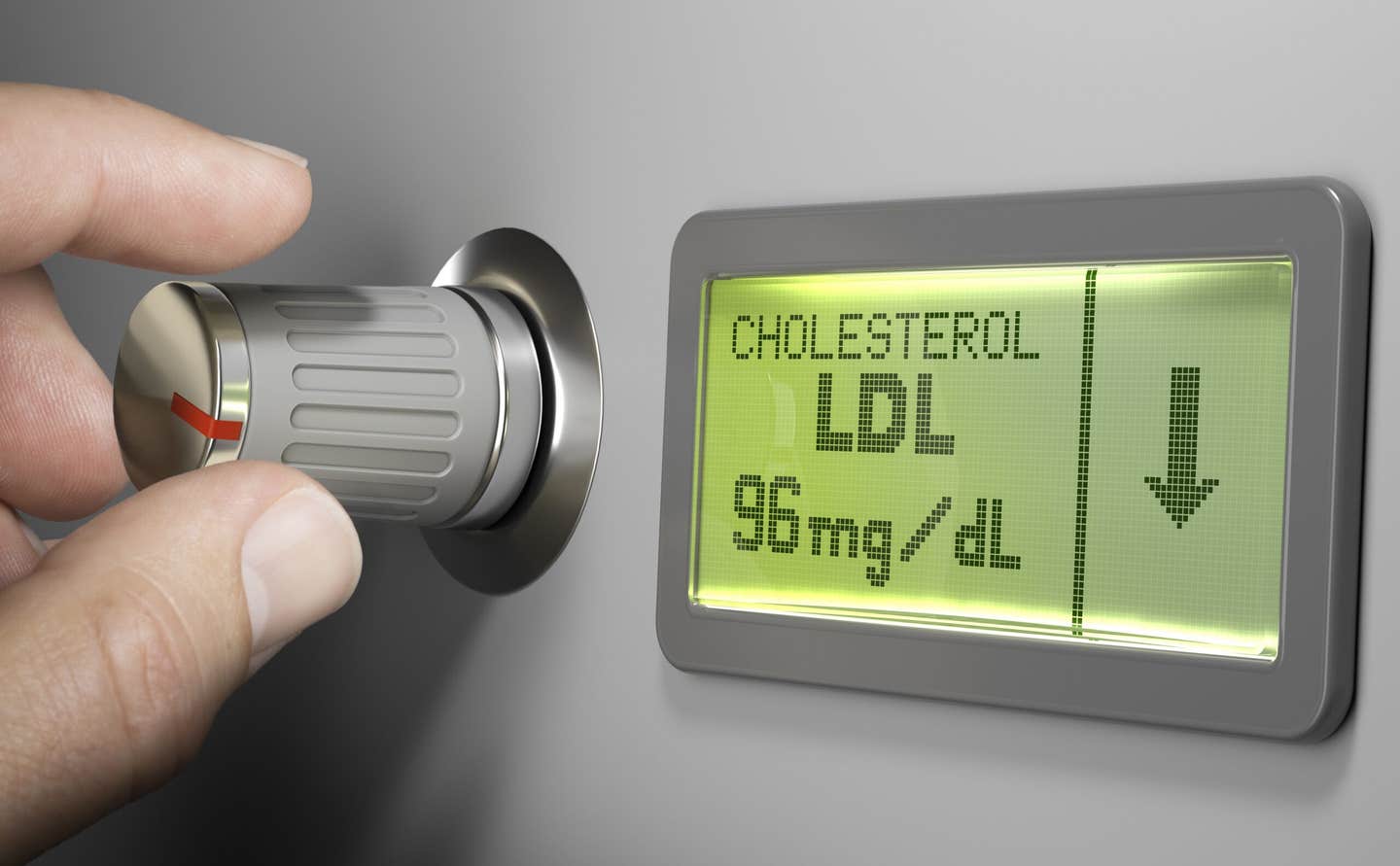Nuclear waste could fuel a clean energy revolution, study finds
Scientists explore how nuclear waste could fuel large scale hydrogen production and ease long term storage challenges.

 Edited By: Joseph Shavit
Edited By: Joseph Shavit

A new scientific review shows how radioactive waste might support large scale hydrogen production. (CREDIT: Shutterstock)
Hydrogen has long been regarded as a clean fuel that has the potential to move the world away from fossil fuel-based energy. It contains a high energy density per unit weight and produces only water when combusted.
Meanwhile, the other, ever-growing global challenge is managing the increasing volume of radioactive waste that requires secure storage for thousands of years. A new scientific review presents the question of whether the two problems can be tackled together by producing hydrogen from nuclear waste.
This work occurs in an era in which global energy consumption continues to rise, coupled with pressures for cleaner and more reliable energy sources. Solar and wind energy are being deployed at a rapid rate; however, their availability is dependent upon the weather and does not provide the strong and sustained thermal energy that many industries require.
Hydrogen would fill this need if we are able to provide it at scale without adding carbon to the atmosphere. The new research asserts that if we can provide access to nuclear waste safely, the waste from nuclear reactors would allow for this vision to be realized, as it provides heat and radiation.
The Burden of an Increasing Waste Stream
Radioactive waste is produced at every stage of the nuclear fuel cycle. Most waste is low-level radioactive waste, while the small fraction of highly radioactive waste carries nearly all of the long-term risk. The highly radioactive waste must be placed in very heavy containers and stored under cooling conditions for decades. As of 2017, approximately 390,000 tons of used fuel were in storage globally, and the amount continues to grow.
That fuel still retains significant amounts of uranium, as well as plutonium, fission fragments, and other elements. Only a small percentage of it is ever reprocessed, and reprocessing brings its own challenges. Long-term storage is difficult and expensive, so researchers are attempting to understand whether any of this waste can be utilized prior to disposal. The recent review indicates that if some of the energy could be turned into hydrogen, it could reduce both the risk and the cost of disposal.
How Radiation Can Split Water
One of the most compelling suggestions in the review is radiolysis, a process that occurs by which radiation splits water molecules apart. This occurs slowly in the deep underground under certain geological conditions, but spent fuel gives off much stronger radiation, thereby intensifying the effect.
Laboratory studies demonstrate the feasibility of such an approach. When water and certain kinds of solid catalysts are exposed to gamma rays, hydrogen production is markedly higher than in plain water. Laboratory tests with titanium dioxide, zirconium dioxide, alumina, and zeolites observed increases greater than ten times. By changing the form of the titanium dioxide, the amount of hydrogen produced increased by a factor of ten, and some zirconium-based materials were even better.
The conditions also matter. For example, adding formic acid increased hydrogen production nearly twelvefold. By increasing the temperature, the increase was doubled or tripled. And keeping the reaction running for longer times also helped. However, the reaction rate declined as the radiation dose increased because the reactive particles annihilated each other prior to the formation of hydrogen gas.
A proposed design would send water, containing titanium dioxide, around blocks of solidified high-level radioactive waste. If all the stored spent fuel around the world were to be placed in the proposed design, the authors rate it at potentially generating up to 42.9 million tons of hydrogen per year. Other studies have produced lower outputs, although they were still of significance, but no new studies have produced higher outputs than shown above, some being comparatively lower efficiencies.
New Pathways for Electrolysis
Electrolysis, which is electricity splitting of water, contributes a small part of the world’s hydrogen supply. The review presents three strategies for a nuclear waste method that could improve efficiencies in electrolysis.
One method utilizes depleted uranium as a catalyst. This fuel is stored at waste storage yards around the world. Depleted uranium, by itself, is not very radioactive and has properties that help speed chemical reactions. Some uranium-based catalysts demonstrated strong activity, lowering the increase in voltage requirements by hundreds of millivolts, and increasing current rates several times over.
Newer materials, including uranium-doped MXenes and uranium on molybdenum disulfide, performed even better. Some catalysts tested achieved very high current levels and low to no increase in overpotential that continued to perform operation over extended time frames. These results indicate that a very common waste material could replace expensive, rare metals in future electrolyzers.
Heat is another resource. Fission products maintained in glass or other inert solid states continue to supply heat for many years, which could be utilized for the production of electricity via boiling water to drive a turbine. One of the systems highlighted in the review harnessed fifty megawatts of heat energy to produce hydrogen through an electrolyzer, achieving production rates greater than one thousand kilograms/hour. Preheating the water increased the efficiency of the system even further.
One third concept involved using radiation itself to help the process of electrolysis. Test runs conducted using a high-energy accelerator noted substantial increases in the production of hydrogen in the presence of radiation inside the cell, with increases upwards of tenfold. This study of radiation for electrolysis is still in experimental phases, but could represent a new opportunity to consider using a combination of electricity and radiation for splitting water.
Different Experimental Approaches
In the review, the authors also discussed additional experimental developments to produce hydrogen. One approach is via a thermochemical cycle using mixes of uranium and cerium oxides. These mixtures also reduce the temperatures used for hydrogen production. A specific combination produced hydrogen at ten-fold the rate and less heat than either oxide independently.
Another approach references wastewater from nuclear power plants. The wastewater contains ethanolamine, and is difficult to remediate. However, using a process called liquid phase plasma photocatalysis, using high-voltage discharge and materials that absorb light, researchers can destroy the chemical while producing hydrogen. Nickel-doped titanium dioxide increased hydrogen formation during trials to double the output.
Uranium-based materials also produced hydrogen in conditions designed to convert methane. In several trials, introducing uranium in the reactor improved methane conversion and hydrogen generation, alongside reducing carbon deposits from methane decomposition due to elevated temperature.
Inhibitions That Slow Progress
Almost all of these processes are still experimental research. The review evaluated and reported progress of the technologies in a nine-level format to indicate where the technologies are in terms of commercial viability. Most of the ideas related to potentially using radioactive waste are level three and four trials, indicating limited evidence of testing beyond controlled conditions to pilot plant scale testing. Other trials were even less advanced.
There are many limiting factors to completing progress. The combined nature of radiation, heat, water, and chemical processing needs careful system design to avoid system issues, including corrosion, pressure, and contamination. Some catalysts undergo significant change in the presence of radiation, leading to loss of efficacy.
Further, regulatory restrictions around the handling of radioactive materials make it difficult to scale up experimental and compositional processing and create dread in the public domain. Because of these challenges, most experimental studies use external radiation sources instead of real waste material, leading to potentially unrepresentative trials.
Still, the review points out a potential pathway. The authors frame the path forward with notions of scientists, engineers, and industry working together, along with policymakers, for progress. The authors indicate that with careful planning and testing in environmental settings, nuclear waste can be a sustainable and cleaner energy source to support hydrogen and other fuel production.
Research findings are available online in the journal Nuclear Engineering and Design.
Related Stories
- Researchers turn nuclear waste into fuel for the future
- Revolutionary new battery turns nuclear waste into electricity
- Groundbreaking diamond battery generates power from nuclear waste
Like these kind of feel good stories? Get The Brighter Side of News' newsletter.
Shy Cohen
Science & Technology Writer



